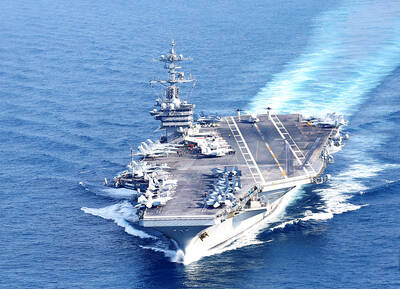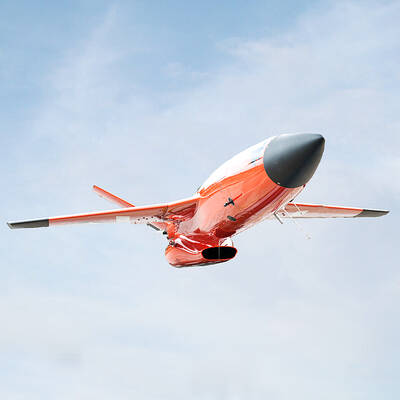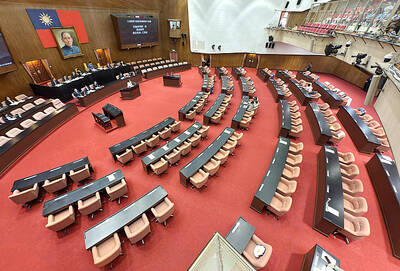The Democratic Progressive Party (DPP) yesterday said that despite government claims that opening the country to Chinese tourists would benefit the economy, the policy had proved a failure.
Acting DPP spokesman Chuang Suo-hang (莊碩漢) told a press conference that since the government opened up the country to Chinese tourists on July 4 last year, only about 360,000 tourists from China had visited the country, or around 1,000 per day, much less than the government’s promise of 3,000.
About 3.5 million Taiwanese visited China in the same period, 10 times the figure for Chinese tourists, he said.
As Taiwan opens to Chinese investment in Taiwan’s tourism market, China should reciprocate and open its tourism market to Taiwanese investment, Chuang said.
He said that several Taiwanese travel agencies had complained that their counterparts in China had delayed payments, with some delayed payments turning into debts.
Chuang concluded that opening up to Chinese tourists had not benefited tourism or the economy and the government should be held responsible for its failed policy.
Chuang’s comments came after the Chinese-language Liberty Times (the Taipei Times’ sister paper) challenged President Ma Ying-jeou’s (馬英九) policy, saying it had only generated revenue of about NT$18 billion (US$548 million) because the number of Chinese tourists was far less than had been expected.
At a separate setting, DPP Legislator Yeh Yi-chin (葉宜津) said the government claimed that Chinese tourists would bring NT$60 billion in revenue per year.
“Where is the NT$60 billion?” she asked.
She said that according to the Sun Moon Lake National Scenic Area Administration, Chinese tourists spent on average NT$1,500 per day between January and last month, similar to what the average foreign tourist spent in the 1970s.
Meanwhile, Ma yesterday dismissed concerns about the disappointing number of Chinese tourists, saying more would come.
Ma yesterday acknowledged that the number of Chinese tourists in Taiwan varied from several hundred per day to about 5,000 per day, but added that his campaign promise would be carried out when the tourism industry is improved.
The industry should strengthen related facilities, such as increasing the number of tourist buses and boats, and raise the quality of its services to meet the demand of growing numbers of Chinese tourists, Ma told reporters yesterday in Panama City.
“There’s nothing wrong with the situation now and I believe we will attract more Chinese tourists when the tourism industry is ready. Chinese tourists are very interested in visiting Taiwan,” he said.
As of Tuesday, the recent number of Chinese tourist arrivals to Taiwan stood at 2,008 per day, said Steven Kuo Su (郭蘇燦洋), deputy director-general of the Tourism Bureau.
Attributing the low numbers to the global outbreak of (A)H1N1 influenza and the economic downturn, Kuo Su said he was confident that the situation would improve next year and that Chinese tourist arrivals would increase year-on-year.
“The Tourism Bureau plans to launch new promotions every year until 2012, by which time Chinese tourists arrivals should reach an annual 1.2 million,” Kuo Su said.
ADDITIONAL REPORTING BY CNA

CROSS-STRAIT COLLABORATION: The new KMT chairwoman expressed interest in meeting the Chinese president from the start, but she’ll have to pay to get in Beijing allegedly agreed to let Chinese Nationalist Party (KMT) Chairwoman Cheng Li-wun (鄭麗文) meet with Chinese President Xi Jinping (習近平) around the Lunar New Year holiday next year on three conditions, including that the KMT block Taiwan’s arms purchases, a source said yesterday. Cheng has expressed interest in meeting Xi since she won the KMT’s chairmanship election in October. A source, speaking on condition of anonymity, said a consensus on a meeting was allegedly reached after two KMT vice chairmen visited China’s Taiwan Affairs Office Director Song Tao (宋濤) in China last month. Beijing allegedly gave the KMT three conditions it had to

‘BALANCE OF POWER’: Hegseth said that the US did not want to ‘strangle’ China, but to ensure that none of Washington’s allies would be vulnerable to military aggression Washington has no intention of changing the “status quo” in the Taiwan Strait, US Secretary of Defense Pete Hegseth said on Saturday, adding that one of the US military’s main priorities is to deter China “through strength, not through confrontation.” Speaking at the annual Reagan National Defense Forum in Simi Valley, California, Hegseth outlined the US Department of Defense’s priorities under US President Donald Trump. “First, defending the US homeland and our hemisphere. Second, deterring China through strength, not confrontation. Third, increased burden sharing for us, allies and partners. And fourth, supercharging the US defense industrial base,” he said. US-China relations under

The Chien Feng IV (勁蜂, Mighty Hornet) loitering munition is on track to enter flight tests next month in connection with potential adoption by Taiwanese and US armed forces, a government source said yesterday. The kamikaze drone, which boasts a range of 1,000km, debuted at the Taipei Aerospace and Defense Technology Exhibition in September, the official said on condition of anonymity. The Chungshan Institute of Science and Technology and US-based Kratos Defense jointly developed the platform by leveraging the engine and airframe of the latter’s MQM-178 Firejet target drone, they said. The uncrewed aerial vehicle is designed to utilize an artificial intelligence computer

The Chinese Nationalist Party (KMT) caucus yesterday decided to shelve proposed legislation that would give elected officials full control over their stipends, saying it would wait for a consensus to be reached before acting. KMT Legislator Chen Yu-jen (陳玉珍) last week proposed amendments to the Organic Act of the Legislative Yuan (立法院組織法) and the Regulations on Allowances for Elected Representatives and Subsidies for Village Chiefs (地方民意代表費用支給及村里長事務補助費補助條例), which would give legislators and councilors the freedom to use their allowances without providing invoices for reimbursement. The proposal immediately drew criticism, amid reports that several legislators face possible charges of embezzling fees intended to pay